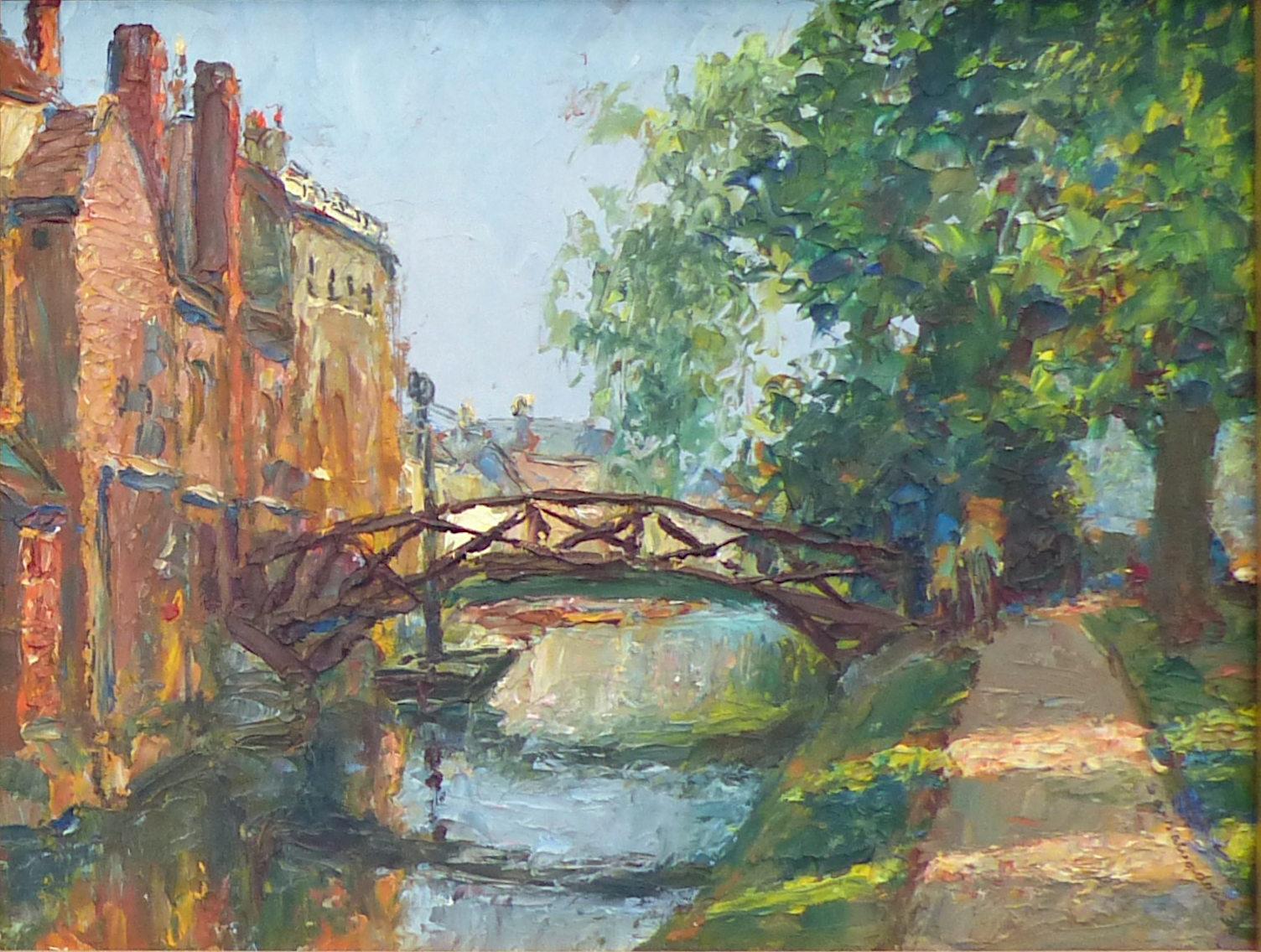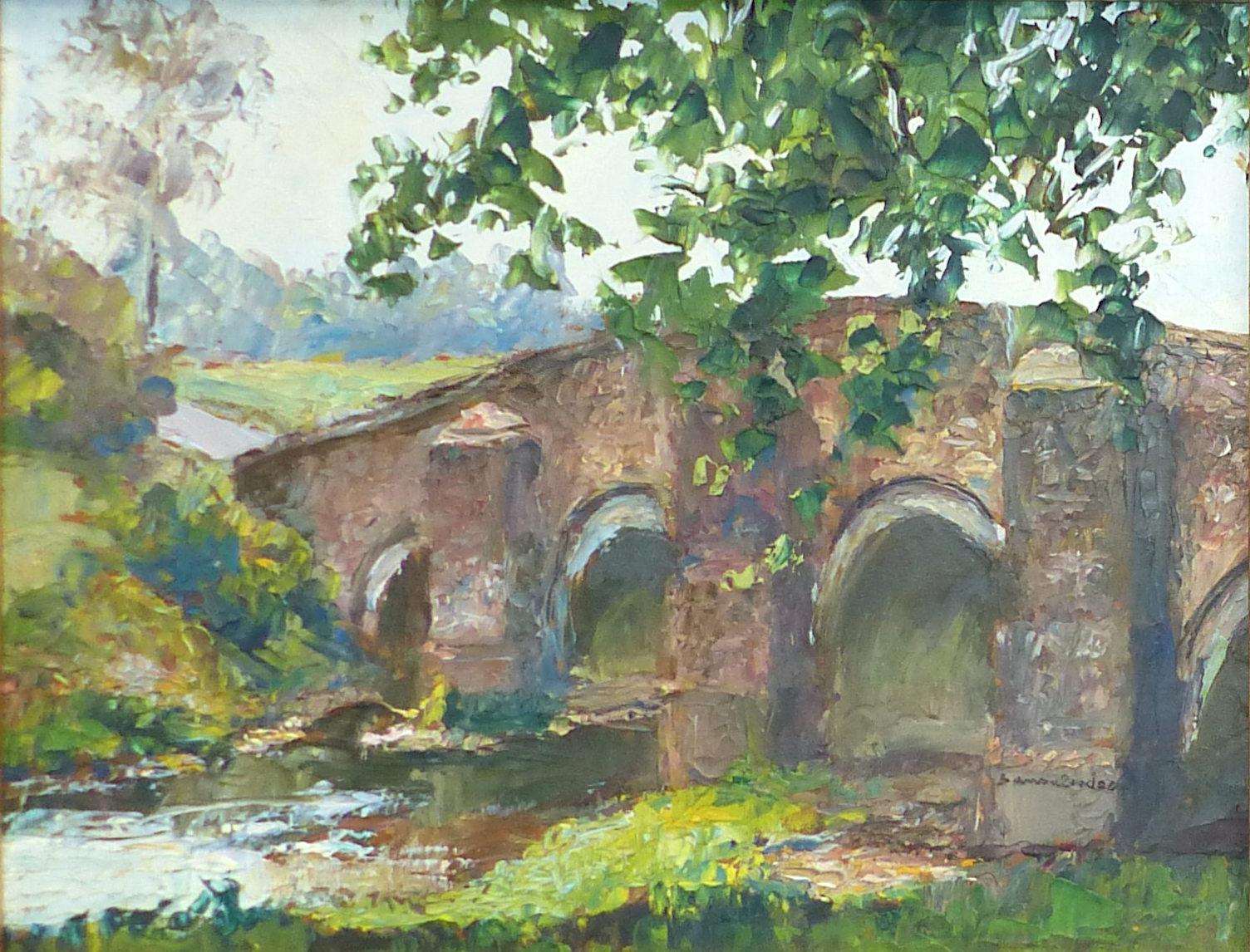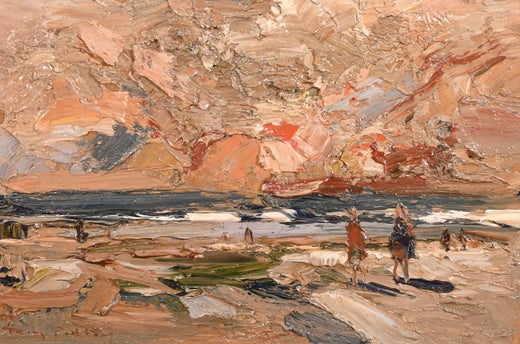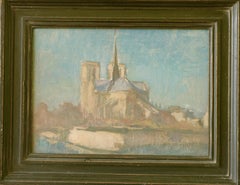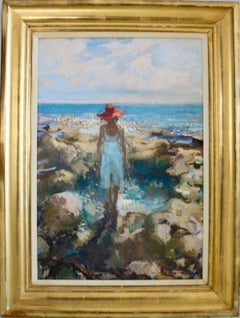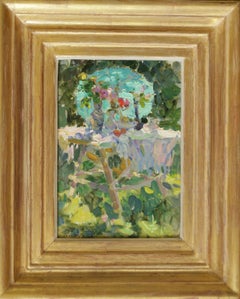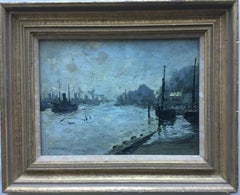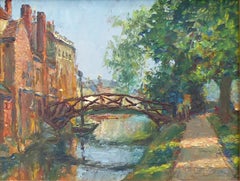Roy PetleyPASSING STORM.Roy Petley contemporary British artist2019
2019
About the Item
- Creator:Roy Petley (1951, British)
- Creation Year:2019
- Dimensions:Height: 18.51 in (47 cm)Width: 21.07 in (53.5 cm)Depth: 1.97 in (5 cm)
- Medium:
- Movement & Style:
- Period:
- Condition:
- Gallery Location:Pollenca, ES
- Reference Number:1stDibs: LU124529023232
Roy Petley
Roy Petley was the firstborn to what became a large family in Grantham, Lincolnshire in April 1950. Little affection was shown to him and the only discipline was the bad tempter of his mother; by the time he was five he had been removed from his family and taken to the Woodlands school near Uckfield, Sussex. Home as well as a school for abandoned children. Petley cannot remember when he first began to draw – ‘Always, always’ is his claim – but it was at this school and in the charge of his art master whose name he recalls as Price. He was a resident at the school for 10 years and tells a story fit for Vasari in that in being let loose in the art room, in a frenzied flurry of activity, he used in one week all of the material available for all of the pupils for one whole term. Formal recognition of his talent came when in 1967 at the age of 16, Petley was awarded a place in the Brighton School of Art. With his family and educational background, it had been decided without reference to him that he needed a safe career prospect offered by training in commercial art. He found himself compelled to draw carefully and in great detail aesthetically unrewarding objects. When he asked if he might change to fine art he was refused. Regretting only that in some sense he had been betrayed by his art master at Woodlands, he cut short his term at University and hitch-hiked to Italy to see and learn from the great masterpieces that have so inspired him. Petley settled in Florence, haunting the Uffizi and Pitti galleries, examining with the closest scrutiny everything from Walter Pater's favorite Botticellis and the melancholy piety of the Portinari Altar by Hugo van der Goes, to the rumbustious pagan episodes illustrated by Pietro da Cortana. He charmed his way into the Gabinetto dei Disegni and was permitted the privilege of handling the old master drawings in that magnificent collection. After a year of living through his art in Florence, Petley returned to England. He was still only 17 and without the experience of formal training in a major art school, lacking the support and recommendation of well-known teachers no gallery would look at his work. Petley drifted to Belfast and did what he could to survive and drew whenever he could. The Bell Gallery gave him some encouragement and sold his drawings, but the time spent surviving and the time spent drawing were unequal and with a sense of growing frustration he returned to London. Back in London, Petley found work in the Greenwich Theatre which afforded him enough time to paint and he managed to exhibit his works in the small galleries of Liberty and Heal’s. In 1972, now 21, he left the theatre confident that he could support himself through his art. Again the galleries around Bond street refused to even view his work – all forms of abstraction were in vogue and Petleys dogged attachment to landscape and urban scene kept him remote from high fashion. With resource and rebellion that had been his boyhood strengths, he took his paintings to the railings of Green Park – the extraordinary fusion of art and junk that lined the length of Piccadilly every Sunday under the respectable title of ‘The Open Air Art Show’ and immediately caught the eye of American dealers who were to become his constant patrons. With such success, Petley could have retreated to a studio and worked for exhibitions in America, but he liked the raffish life of the Sunday shows, the banter with other artists and the chance encounters with people who might buy. One cheque caused him some dismay, for it was signed only with a Christian name, but the bank on which it was drawn was reassuring – not only would it be honored but without realizing it he has become the object of Royal patronage. The Duchess of Kent, whose cheque it was returned for more paintings. A member of the Queen Mother’s household staff came to look at Petleys works and bore back to her a portrait study of Prince Charles. Petley was summoned to the Queen Mother’s presence. Commissions followed from both the Duchess and the Queen Mother. Petley was required amongst other things to paint views of Sandringham and one painting bought by the Queen Mother was given to Prince Charles as a birthday gift. Set fair with such patronage, he gave lessons to the Duchess of Norfolk – an oddly old fashioned relationship rare now though common enough in the 20th century. The wry twist is that Petley himself was untutored and could only teach by example. The paid sat together painting the same landscapes on the same scale, just as Paul Maze and Winston Churchill, exchanging observations with Petley having to give reasons for actions which to him were wholly instinctive. By 1985, The Open Air Art Show had lost its casual attractions for Petley. He had for some years lived in Norfolk and the growing number of patrons and supporters in the country removed the need for weekly journeys to London. Petley had no reputation among critics and the Arts Council had never heard of him but his paintings were in rising demand and his American connections were as constant as ever. Able to sell all that he could paint and with the patronage that must be the envy of even the most celebrated contemporary painters. Petley did not need the London art world and it was only the consequence of persuasive argument that he was persuaded to expose in London.
- ShippingRetrieving quote...Ships From: Pollenca, Spain
- Return PolicyA return for this item may be initiated within 3 days of delivery.
More From This Seller
View All2010s Impressionist Landscape Paintings
Oil
2010s Impressionist Landscape Paintings
Oil
Early 2000s Impressionist Landscape Paintings
Oil
20th Century Impressionist Landscape Paintings
Oil
2010s Impressionist Landscape Paintings
Oil
2010s Impressionist Landscape Paintings
Oil
You May Also Like
1950s Impressionist Landscape Paintings
Oil
2010s Impressionist Landscape Paintings
Oil, Canvas
1940s Impressionist Landscape Paintings
Oil
2010s Impressionist Landscape Paintings
Canvas, Oil
1940s Impressionist Landscape Paintings
Oil
1990s Impressionist Figurative Paintings
Canvas, Oil
